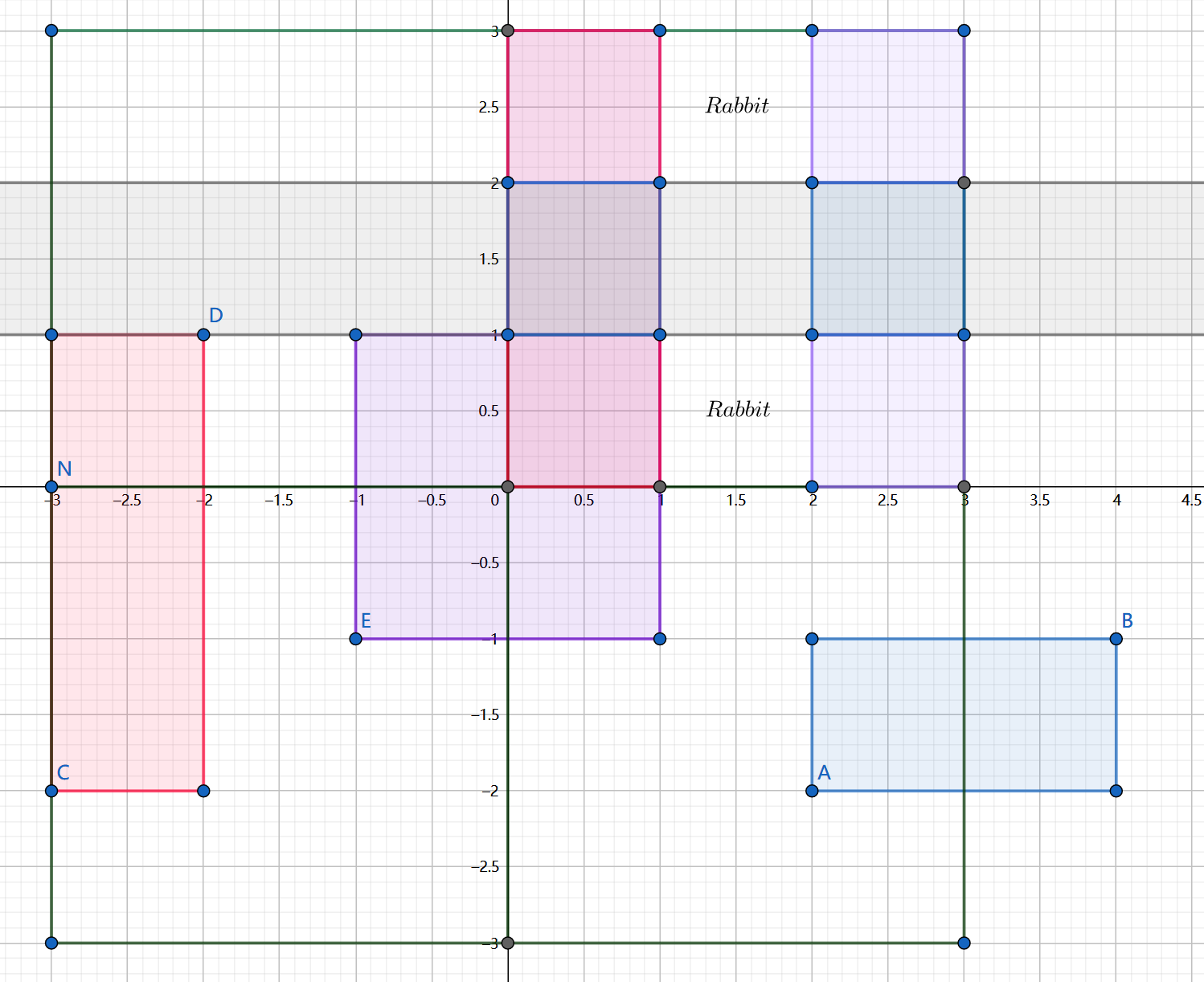1
2
3
4
5
6
7
8
9
10
11
12
13
14
15
16
17
18
19
20
21
22
23
24
25
26
27
28
29
30
31
32
33
34
35
36
37
38
39
40
41
42
43
44
45
46
47
48
49
50
51
52
53
54
55
56
57
58
59
60
61
62
63
64
65
66
67
68
69
70
71
72
73
74
75
76
77
78
79
80
81
82
83
84
85
86
87
88
89
90
91
92
93
94
95
96
97
98
99
100
101
102
103
104
105
106
107
108
109
110
111
112
113
114
115
116
117
118
119
120
121
122
123
124
125
126
127
128
129
130
131
132
133
134
135
136
137
138
139
140
141
142
143
144
145
146
147
148
149
150
| #include <bits/stdc++.h>
#define int long long
#define maxn 800005
#define lson(x) (x << 1)
#define rson(x) (x << 1) + 1
#define IO ios::sync_with_stdio(false);cin.tie(nullptr);cout.tie(nullptr)
using namespace std;
int n, d;
template<typename T>
void Print(T value){
std::cout << value << '\n';
}
template<typename Head, typename... Rail>
void Print(Head head, Rail... rail){
std::cout << head << ", ";
Print(rail...);
}
int read(){
int x = 0, f = 1;
char ch = getchar();
while(ch < '0' || ch > '9')
ch == '-' ? f = -1, ch = getchar() : ch = getchar();
while(ch >= '0' && ch <= '9')
x = x * 10 + ch - '0', ch = getchar();
return x * f;
}
struct Line {
int x, y1, y2;
int mark;
bool operator < (const Line &A){
return x < A.x;;
}
};
struct SegTree {
int lf, rt;
int len;
int lazy;
} tree[maxn];
void Build(int now, int lf, int rt) {
tree[now].lf = lf;
tree[now].rt = rt;
tree[now].len = 0;
if(lf == rt) return;
int mid = (lf + rt) >> 1;
Build(lson(now), lf, mid);
Build(rson(now), mid + 1, rt);
}
void Pushdown(int now) {
if(tree[now].lazy != 0)
{
tree[lson(now)].len += tree[now].lazy;
tree[rson(now)].len += tree[now].lazy;
tree[lson(now)].lazy += tree[now].lazy;
tree[rson(now)].lazy += tree[now].lazy;
tree[now].lazy = 0;
}
}
void Update(int now, int L, int R, int v) {
int nowlf = tree[now].lf, nowrt = tree[now].rt;
if(nowlf >= L && nowrt <= R)
{
tree[now].len += v;
tree[now].lazy += v;
return;
}
Pushdown(now);
int mid = (nowlf + nowrt) >> 1;
if(L <= mid)
Update(lson(now), L, R, v);
if(R > mid)
Update(rson(now), L, R, v);
tree[now].len = min(tree[lson(now)].len, tree[rson(now)].len);
}
int ask(int now, int L, int R) {
if(tree[now].lf >= L && tree[now].rt <= R) {
return tree[now].len;
}
Pushdown(now);
int mid = (tree[now].lf + tree[now].rt) >> 1;
int res = (1LL << 30);
if(L <= mid)
res = min(res, ask(lson(now), L, R));
if(R > mid)
res = min(res, ask(rson(now), L, R));
return res;
}
vector<Line> SL[maxn];
void add(int x1, int y1, int x2, int y2) {
SL[x1].push_back({x1, y1, y2, 1});
SL[x2 + 1].push_back({x2 + 1, y1, y2, -1});
}
signed main() {
IO;
cin >> n >> d;
for(int i = 1; i <= n; i++) {
int x1, y1, x2, y2;
cin >> x1 >> y1 >> x2 >> y2;
x2--, y2--;
if(x2 - x1 + 1 >= d) x1 = 0, x2 = d - 1;
if(y2 - y1 + 1 >= d) y1 = 0, y2 = d - 1;
x1 = (x1 % d + d) % d, x2 = (x2 % d + d) % d, y1 = (y1 % d + d) % d, y2 = (y2 % d + d) % d;
if(x2 >= x1) {
if(y2 >= y1) {
add(x1, y1, x2, y2);
} else {
add(x1, y1, x2 ,d - 1);
add(x1, 0, x2 ,y2);
}
} else {
if(y2 >= y1) {
add(x1, y1, d - 1, y2);
add(0, y1, x2, y2);
} else {
add(x1, y1, d - 1, d - 1);
add(0, y1, x2, d - 1);
add(x1, 0, d - 1, y2);
add(0, 0, x2, y2);
}
}
}
Build(1, 0, d - 1);
int ansx = -1, ansy = -1;
for(int i = 0; i < d; i++) {
if(ansx != -1) break;
for(auto l : SL[i]) {
Update(1, l.y1, l.y2, l.mark);
}
if(ask(1, 0, d - 1) == 0) {
for(int j = 0; j <= d - 1; j++) {
if(ask(1, j, j) == 0) {
ansx = i, ansy = j;
break;
}
}
}
}
if(ansx != -1) {
cout << "YES\n";
cout << ansx << " " << ansy << endl;
} else {
cout << "NO\n";
}
return 0;
}
|
